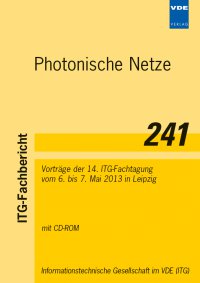Migration from GPON to Hybrid PON: Complete Cost Evaluation
Conference: Photonische Netze - Vorträge der 14. ITG-Fachtagung
05/06/2013 - 05/07/2013 at Leipzig, Germany
Proceedings: Photonische Netze
Pages: 6Language: englishTyp: PDF
Personal VDE Members are entitled to a 10% discount on this title
Authors:
Machuca, Carmen Mas (Institute for Communication Networks (LKN), Technische Universität München, 80290 München, Germany)
Krauss, Sandro; Kind, Mario (Deutsche Telekom, Innovation Laboratories, Winterfeldtstr. 21, 10781 Berlin, Germany)
Abstract:
Network operators are evaluating different alternatives to increase the capacity of their access networks as well as increasing reach and fan out. Next Generation Optical Access Networks uses technologies enabling high access bit rates to any user, but also supporting larger access areas served by a single access node. This increase of covered area allows reducing the number of access sites which is expected to reduce the Total Cost of Ownership of the whole network while offering higher bandwidth. Hybrid PON has been depicted as one of the most promising Next Generation Optical Access architectures due to its high scalability on resource utilization and its smooth migration capability from existing GPON. This paper provides a description of the migration process from GPON to Hybrid PON and analyses the migration costs in different areas (dense urban, urban and rural) for two alternatives of offering 300Mbps and 500Mbps sustainable to the users. The cost assessment includes CAPEX (infrastructure and equipment) as well as OPEX (energy, fault management, service provisioning, etc.). Furthermore, it evaluates the cost savings that the reduction of access sites would offer to the Hybrid PON deployment. The impact of other aspects such as the duration of the migration, the migration starting time, etc. is also investigated. Out of the cost analysis, the major cost factors of the Hybrid PON deployment are identified.


